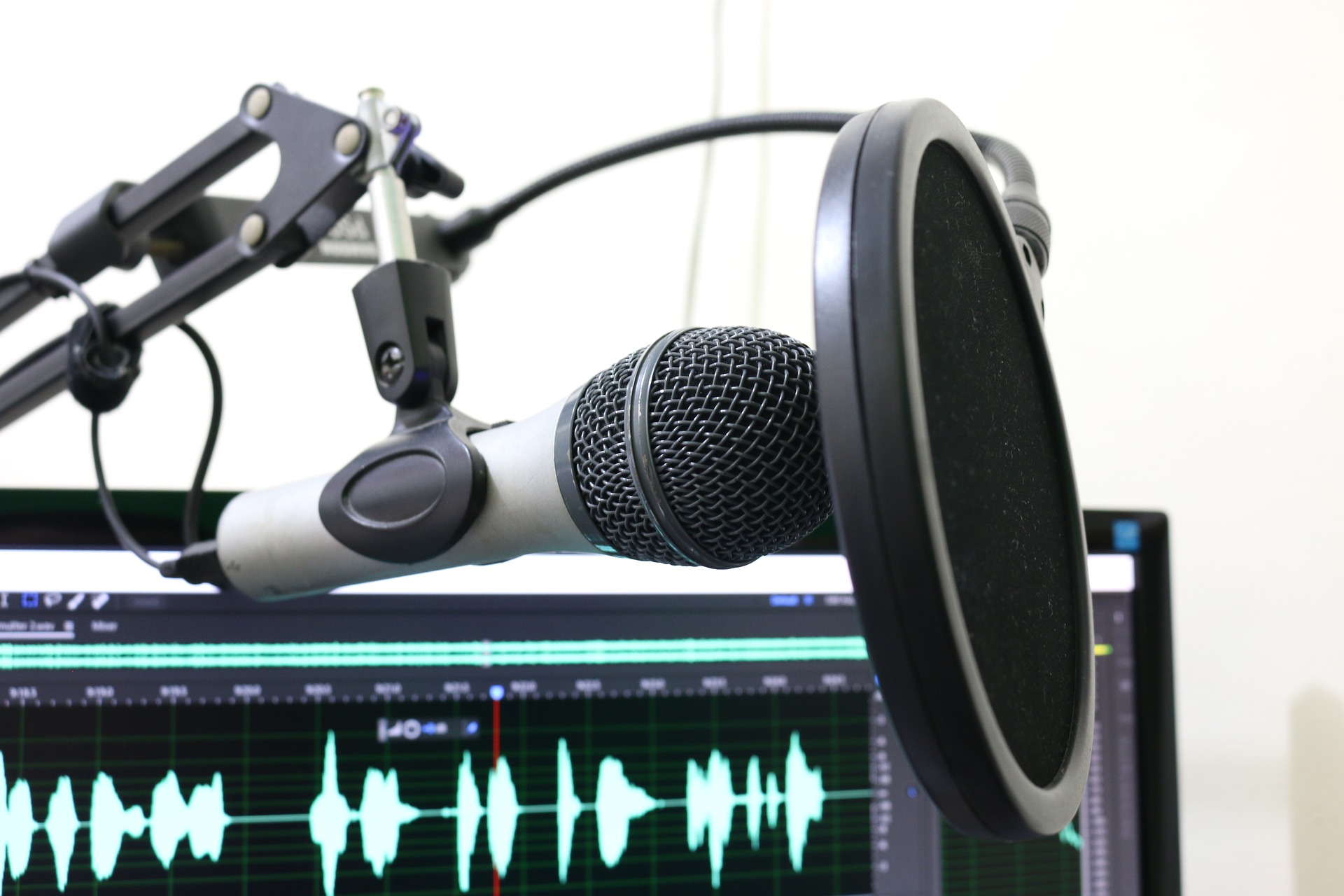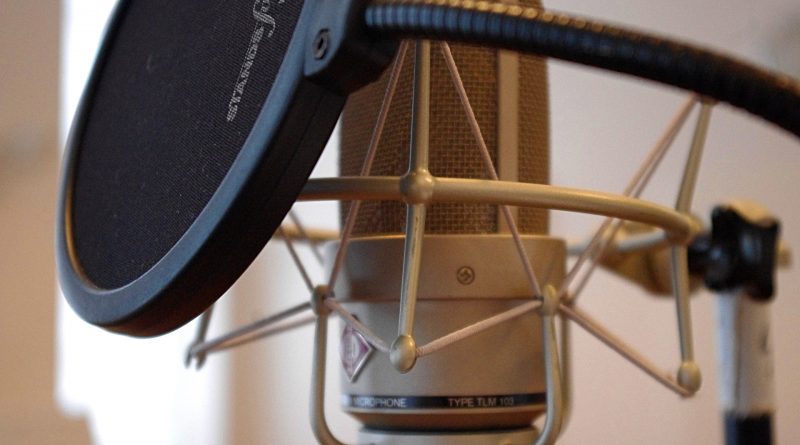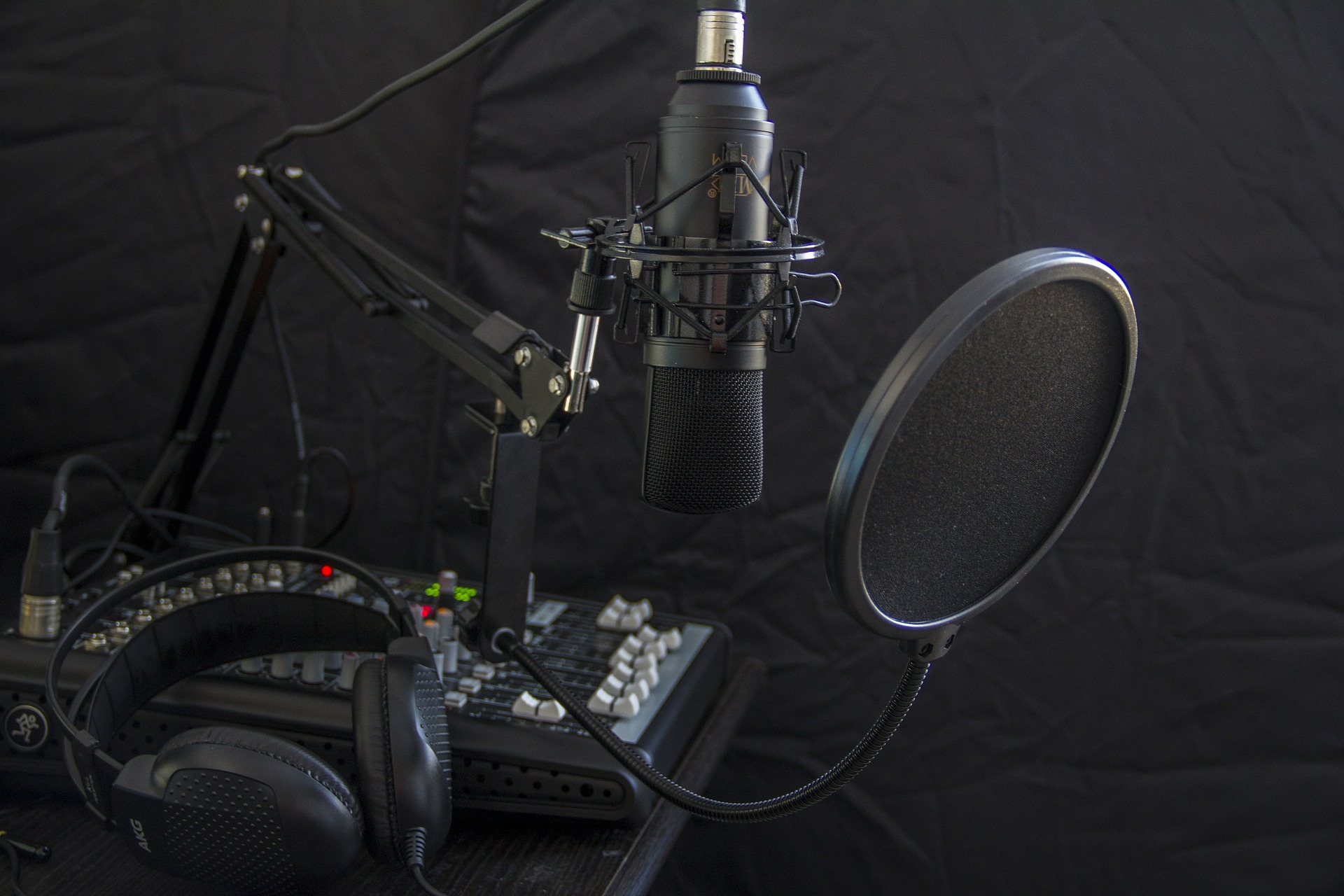Pop Filters: Why Voice Actors Need Them
To most voice actors, pop filters are one of the most essential tool in their studio arsenal that they would nearly never work without one. It pretty much speaks about why most photographs of a voice over talent at a microphone in a studio session have that big black circle that stands between the mic and the talent.
But what is a pop filter and why does it demand to be used?
What is a pop filter?
A pop filter, also known as a pop shield or pop screen, is a circle of nylon mesh or a thin metal that you attach to your microphone stand, positioned between the microphone and the sound source. Pop filter is invented for the existence of “plosives” — explosive consonants heard from words that start with “p” or “b” which is normal part of our natural speech.
They are also sometimes mistakenly referred to as a microphone windscreen or windshield – a similar device that’s primarily used by location sound recordists, for reducing noise from wind when recording outside.
But a windscreen is far from being an alternative to a pop filter. Why? Because it’s made specifically to deflect breezes when being used outside at concerts, interviews, or film shoots, and not for a full-on plosive absorption.Furthermore, the thickness of foam invariably absorbs some high frequencies, causing the sound to become noticeably duller than it should be.
Why and how do popping sounds occur?
Dead sure, you have tried distinguishing the sound of your speech when spoken normally and on a microphone. Noticed that the microphone speech is ruined by loud popping and banging noises?
These pops and thumps are called ‘plosive’ sounds. Words that starts with these letters “p” or “b” tend to produce a burst of air which your microphone’s diaphragm will pick up, causing your input level to spike.
Similar to when you try to utter words starting with “p” or “b” in front of a lighted candle, you would see the flame flicker. That is because we let out more air when making these sounds. Oppositely, if you vocalize a long ‘ahh’ sound, the candle will barely flicker at all, because you’re mainly just producing sound vibrations with your vocal cords and expelling very little air.
The problem worsens if the mouth is very close to the microphone. The plosive air blast is obviously strongest close to the mouth, and when it slams into the microphone diaphragm it produces a very large asymmetrical output signal. This may be so large that it can saturate the microphone’s output transformer (if present) or overload the mic preamp, making the sound even worse. Engaging the low-cut filter on the mic (ideally) or preamp may ease the overloading problem, but the basic cause of the popping will still remain.
Uses and Advantages of Pop Filters
There’s nothing magic about pop filters; in fact, you can improvise your own pop filter using an ordinary stocking nylon if your creativity strikes and if your time permits you. Here’s a tutorial video on DIY pop filters:
However, despite its simplicity, the humble pop filter provides benefits that makes it an extremely useful recording tool. Whether you’re a voice actor, singer, musician or studio engineer, pop filter is equally useful to just about anyone who records speech or vocals.
Here are the main uses of pop filters:
1. Eliminates plosive sounds
Pop filters are invented to get rid of plosive sounds like Ps and Bs that ruin our recording quality and can minimize the sibilance, the hissing noise from S sounds.
As the burst of air moves towards the microphone, the fabric fine mesh acts as a shield that breaks it up, having the air molecules dispersed. As a result, the burst of air loses its impact on the microphone’s diaphragm.
For extra, many pop filters are designed with two layers of fabric placed a small distance from one another. This provides a second layer of protection – anything that breaches the first layer is caught by the second. It’s important to note that you need to leave a few inches of space between the pop shield and your microphone, as there needs to be a mass of air in between to be fully effective.
If you refuse to use a pop filter when doing your recordings, your voice over outputs are likely to have something that makes you want to retake your script. The video below demonstrates the difference between the recordings with a use of pop filter and with none.
https://www.youtube.com/watch?v=qURouUP4skU
2. Microphone protection
 When you talk to a microphone, some combination of moisture, saliva and dust being forced into the microphone capsule are inevitable. The components inside a microphone are very delicate, and if you’ve spent good money on a high quality microphone, the last thing you want is damage from moisture settling in the capsule. Over time this can even lead to mould growth – unpleasant, unhygienic, and damaging to your cherished mic.
When you talk to a microphone, some combination of moisture, saliva and dust being forced into the microphone capsule are inevitable. The components inside a microphone are very delicate, and if you’ve spent good money on a high quality microphone, the last thing you want is damage from moisture settling in the capsule. Over time this can even lead to mould growth – unpleasant, unhygienic, and damaging to your cherished mic.
With pop filters, your microphone is instantly protected from all these dirt. Don’t worry about your filters, as they are easy to clean and there are pop shields which filters are replaceable.
See next article for your guide in choosing your pop filter —>


